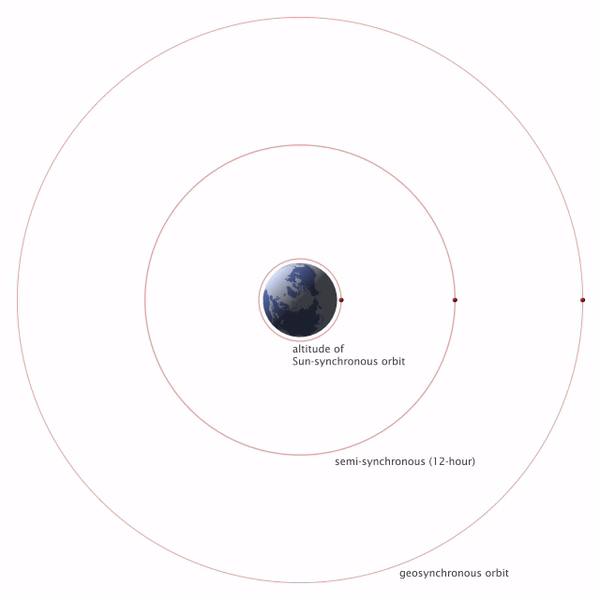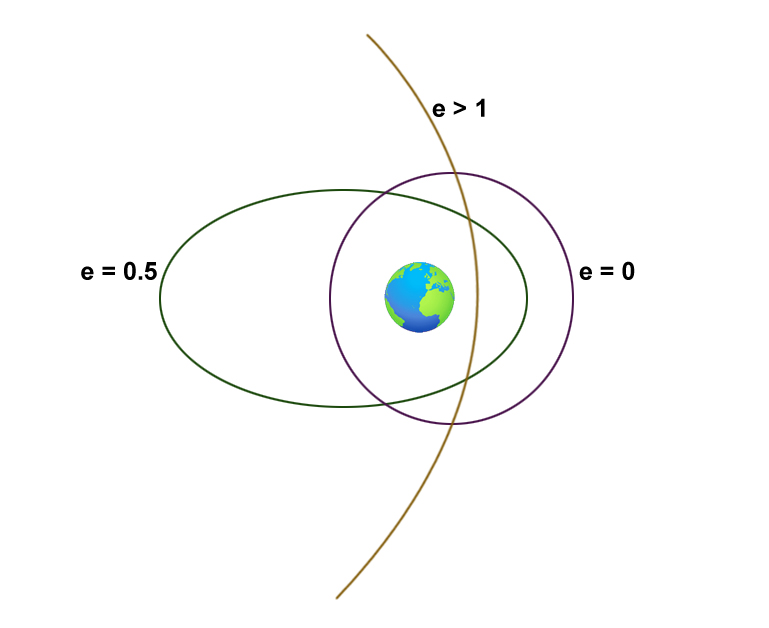Table of Contents (click to expand)
Dead satellites are still revolving around Earth in high orbits, but there are factors and features to ensure they stay under the control of Earth’s gravity.
If you are reading this, then you likely know a bit about dying satellites. We have heard about these no-longer-useful satellites being ordered back to land, and have sometimes even witnessed them burning up and disappearing like shooting stars.

These dying satellites are no longer able to sustain themselves for multiple reasons. They are on their last legs when the decision to perform their final rites is made. If they will soon be out of control of the people down here on the ground, so it’s best to send them off to their graveyard, right?
The question that kept nagging me was – can any of these dead satellites actually leave Earth’s orbit? If so, how?
The Final Rites For Satellites
For a number of reasons, these metal-bodied satellites have an expiration date. Some of them have defied their expected death date, while others have died early. Regardless, when sending off a satellite into Earth’s orbit, scientists are very aware of its inevitable death.
When it is time to say goodbye, many factors are taken into consideration to decide which procedure will be the suitable death ritual.
Is it small enough and far enough to burn up in the Earth’s atmosphere upon entry? If so, one of the shooting stars in the sky at that time could be that satellite’s last flash of greatness.
However, if it won’t burn up enough to avoid causing damage on land, there are two other ways it is dealt with.
Firstly, they can be ordered back to land, but in a remote area where it won’t cause any damage to human civilization. As a matter of fact, this remote area has already been decided and agreed upon, and also has a name—the Spacecraft Cemetery! It is a region far far away from land and lies in the remotest part of the Pacific Ocean.

The second method involves sending them farther away from the Earth, but still keeping it under slight control of its gravity. This way, it is not in the way of other satellites, but is also still orbiting the Earth. This ensures that the out-of-control and dead satellites won’t cause any trouble for other satellites or act as a hazard in space.
Now, to understand if satellites can actually leave Earth’s orbit, let’s quickly dive into their orbital patterns and what influences them.
Also Read: Graveyard Orbit: What Happens When Artificial Satellites Die?
Orbits Of Satellites
There are three orbit types for these satellites revolving around the Earth – the low Earth, the mid Earth, and the high Earth orbits.
The high Earth orbit is also called the geosynchronous orbit, as this is where geosynchronous satellites or geostationary satellites lie. These are the satellites that seem stationary relative to our position on Earth.

The mid Earth orbit is where we mostly find GSP satellites. These are the satellites that map the land and help in updating live traffic, location tracking, etc.
Finally, the low Earth orbit is also called the Sun-synchronous orbit, because it is mostly inhabited by satellites that travel from north to south pole. They are also called sun-synchronous satellites because they pass over a region at the same local time every day, i.e. their position is fixed relative to the location of the Sun in the sky.
A satellite’s orbit is also characterized by its speed, its eccentricity, inclination, and more. This is to be expected, as the orbit is a closed loop around the Earth. Obviously, for it to leave Earth’s orbit completely, its loop needs to open up. In more scientific terms, its trajectory needs to become a hyperbola instead of an ellipse.
However, what does it require to be set free from Earth’s gravitational clutches?
Launching a satellite requires it to thrust with the speed required to go above the atmosphere and into an orbit, but not enough to set it free.
While on their deathbeds, the satellites are commanded to either thrust themselves into a lower orbit and enter Earth’s atmosphere or thrust them into a higher orbit in their astral graveyard.
Both of these options require significant fuel consumption.
Once in their orbit at a certain speed, the gravitational force does all the work of keeping it in that place, not the satellites themselves. It is only in cases of changing their positions and their internal functioning that they consume energy.
Also Read: How Are Satellites Put Into Orbit And Kept Up There For So Long?
How Can A Dead Satellite Leave Earth’s Gravity Completely?
Imagine a satellite on its deathbed. It has a very limited energy source and is definitely going to be out of control of the operators on Earth very soon. Imagine the satellite to be humongous, as that’s the only way it will be allowed to enter a higher orbit to die.

Now, entering this graveyard orbit requires a thrust, i.e., energy. Once it enters the graveyard orbit, it will have lost all its connection to the people on Earth.
Now, here’s the deal, how can it leave that final orbit and say goodbye to Earth completely?

Well, it would need another push to change its trajectory from closed (ellipse) to open (hyperbola). For a satellite that is huge, the required force would be just as massive. If it were a healthy working satellite with enough fuel, it could have done that, but alas, this satellite has used up all its resources. So, unless some external force can push it out, it is still stuck in a relationship to the Earth.
In conclusion, satellites orbiting the Earth die, but remain connected to the Earth in some way. It is ensured that they don’t leave the Earth’s orbit, even in their death and all the years to come. So, the final answer to our original question is… No, the satellites orbiting the Earth will not escape the Earth after their purpose is fulfilled.
How well do you understand the article above!

